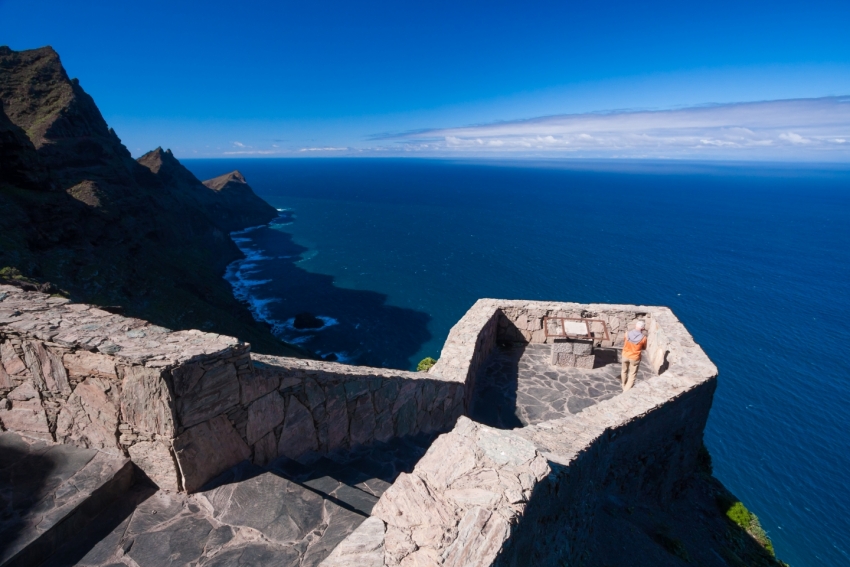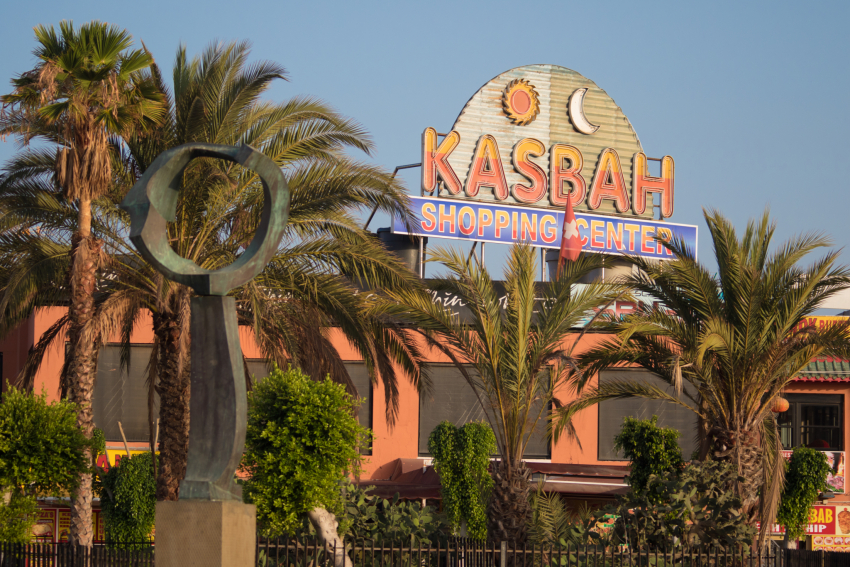Gran Canaria is a small island
Gran Canaria is a round island with a diameter of about 50 km and an area of about 1500 square kilometres. That's about the same size as the Isle of Sky or Lesbos and almost the same size as Greater London . However, because Gran Canaria is also almost 2000 metres high, there's a lot more to it that you'd expect. Deep valleys, known as barrancos, running from the highlands to the sea give it a huge surface area and lots of nooks and crannies.
While you can drive around the coastline of Gran Canaria in a day, it takes a lot longer to explore the whole island because of all the windy roads. We've been photographing Gran Canaria for decades (yes, we're that old) but still find new places to visit in a car every year.
Once you start walking, you realise that Gran Canaria is a huge and variable island.
Gran Canaria is a giant resort
This is a persistent and rather depressing myth that travel writers keep alive so that they don't have to think of an original first sentence for their latest piece.
"You may think that Gran Canaria is just a big resort, but ..."
"Outside the resorts, there's a whole world to discover in Gran Canaria ..."
And so on and on and on and on, etc.
Gran Canaria's resorts occupy less than 1% of the island; The rest is a mixture of mountains, forests, towns, villages and a big city. The island has some of the highest sea cliffs in the world, vast areas of wilderness, vineyards, a bustling capital and over 80 beaches.
The only people who still think the island is a big resort are the ones who can't be bothered to get off their sun loungers.
There's nothing in Gran Canaria except beaches
There are about 80 beaches in Gran Canaria if you count all the little ones but most of Gran Canaria's coastline is rocky. While lots of holiday visitors don't see much of the island away from the beaches, there's a whole lot of stuff to see and do away from the sand.
You have to be careful with the food
We've met people who won't eat Jamon Serrano or even imported British breakfast sausage in Gran Canaria "because you have to be careful with pork abroad".
A slight case of overcaution maybe!
We understand that you are away from home and a little out of your comfort zone when it comes to food, but you really can relax. Food hygiene standards are the same as anywhere else in Europe and there are no infectious diseases or parasites on the island.
So chill out and just eat what you want in Gran Canaria. If your food comes out hot and looks and smells good, then you are fine.
And the water and ice
The tap water in Gran Canaria is perfectly safe to drink, wash in and brush your teeth with. It just doesn't taste very nice because it's made from desalinated seawater and contains lots of chlorine and minerals.
Most locals drink bottled water sold in five- or eight-litre bottles called garrafas. However, if you do drink a glass of the tap water don't panic. You won't get a tummy bug from it.
As for the ice, Gran Canaria bars and restaurants don't have time to make their own ice. They buy it in bags from the ice factory and it's perfectly safe.
Gofio is a Canarian food
Everyone in the canary Islands believes that there is nothing more Canarian than gofio and that it is a unique food that was invented by the island's original inhabitants. However, roasted barley or grain flour is actually quite a common foodstuff around the world. From Finland to Tibet via North Africa and South America, local versions of gofio are widespread.
The Guanches were tall, blond Atlanteans
The Canary Islands original inhabitants (technically only the ones from Tenerife are called Guanches) were much taller than the Spanish in the 15th Century but that's because the Spanish were short. The original Canarians obviously had a better diet and were tall by the standards of the time but they weren't blonde and didn't come from Atlantis. Historians are pretty sure that their ancestors were Berbers from the Atlas Mountains in modern-day Morocco. We still don't know how they ended up on the Canary Islands.
The blonde myth comes from people seeing mummies with pale hair but this is caused by fading over time rather than by Aryan roots.














